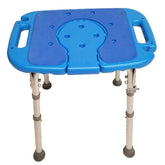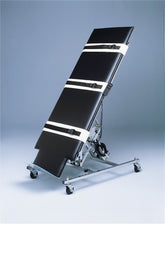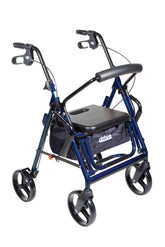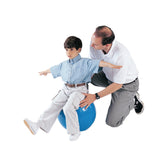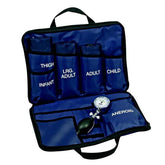
Hot & Cold Therapy Tips for Quick Relief from Muscle Pain
How can you ever forget that sudden twinge in your back when you bend down to tie your shoes? Or those stiff, achy shoulders after sitting at your desk for hours, pretending that posture isn’t slowly ruining you? It is true that muscle pain can show up uninvited and refuse to leave.
But, before you grab a bottle of painkillers or just accept another day of discomfort, there’s a simple trick you might be overlooking: hot and cold therapy. Seriously, it works. A little heat can relax tense muscles, a bit of cold can calm swelling, and when you get the timing right, it feels like your body’s finally listening to you.
And the best part is, having the right equipment actually changes the game. A quality gel pack or heating pad doesn’t just sit there; it molds to your muscles, keeps the temperature just right, and actually does what it’s supposed to do. That’s the kind of relief that makes you feel better.
Why Heat Therapy is Good
Heat therapy is like telling your muscles to take a deep breath and relax. When muscles are stiff or sore from sitting in one position for too long, exercising, or even sleeping awkwardly, applying warmth improves blood flow and eases tension.
A few tips for using heat effectively:
-
Apply it for 15–20 minutes at a time. Longer sessions aren’t better and can irritate the skin.
-
Keep the temperature comfortable. You want soothing warmth, not burning hot.
-
Focus on the sore area rather than covering a large region. Targeted heat works better.
For example, after a long day at your desk, placing a heating pad on your shoulders can quickly ease stiffness and help you move more freely. Using a reliable heating pad ensures that the warmth spreads evenly and consistently, which is why professional-grade products matter.
Why Cold Works
Cold therapy helps with inflammation and swelling, and it can be particularly effective following a minor episode or hard work. Cold reduces pain in aching parts of the body and slows down the internal processes, which lead to swelling, allowing you to heal more quickly.
Some simple tips for using cold:
-
Use cold packs in 10-15-minute intervals. Excessively long may be annoying to the skin.
-
Cold packs or gel packs should always be covered with a cloth in order to protect your skin.
-
It should be repeated if necessary during the first 24 to 48 hours following an injury to have the best results.
You can imagine that you are in a rush and twist your ankle on the way down the stairs. A cold pack will bring the swelling down and relieve the pain, so that you can be mobile and speed up your recovery. This is much easier and more effective by using cold packs that conform to the body and keep the temperature constant.
The Power Combo: Heat + Cold
Here’s a trick many people overlook: alternating heat and cold. Cold first to tame swelling, heat later to relax tight muscles. Together, they speed recovery and make sore muscles feel surprisingly human again.
For example, after a weekend of yard work, your back might scream at you. Start with cold therapy to calm any minor swelling, then switch to heat the next day to ease tension. Using reliable equipment makes swapping between hot and cold easy and stress-free.
Everyday Tips That Work Like Wonder
You don’t need to be injured to benefit from hot and cold therapy. Even small aches and stiffness respond well:
Desk warriors: Warm your shoulders after hours of typing.
Gym-goers: Cold therapy post-workout eases sore muscles.
Chronic aches: Alternate heat and cold for consistent relief.
The trick is consistency. Ten to fifteen minutes a few times a day can make a noticeable difference. And when your tools are comfortable and reliable, therapy stops being a chore and becomes part of your routine.
Safety: Keep It Simple
Even simple therapy has rules:
-
Don’t use heat on fresh injuries or broken skin.
-
Avoid cold areas with poor circulation.
-
Never fall asleep with a heating pad on.
Professional products often have built-in safety features, like even heat distribution and long-lasting cold, so you can focus on relief instead of worrying about mistakes.
Choosing the Right Equipment
Hot and cold therapy tools are not all equal. Inexpensive pads or gel packs may be bumpy, lumpy, and a pain to hold. Good equipment counts:
Sturdy: Able to withstand repeated wear.
Comfy: Soft and pliable, and conforms to your muscles.
Safe: Offers consistent heat to maximize therapy.
Versatile: Can be used to exercise many different muscle groups.
Building a Routine
Muscle pain often isn’t a one-time problem. The best results come from short, regular sessions. Keep a heating pad or gel pack nearby and use it whenever soreness appears. Over time, consistent therapy helps muscles stay loose, reduces tension, and keeps daily life moving smoothly.
Using high-quality equipment makes maintaining this routine simple. You will not be forced to stuff a lumpy pad or wait until a cold pack cools down. Good quality tools allow you to make the therapy a routine of your day, and your muscles heal more effectively.
Final Thoughts
Muscle pain doesn’t need to slow you down. Hot for stiffness, cold for swelling, and a little combination therapy in between can make a real difference. Brief regularized sessions using the appropriate tools provide relief with the least possible damage.
The right equipment makes therapy easier, more comfortable, and more effective. When you purchase professional hot or cold therapy products from Cathedral Ledge Medical Supplies, you are guaranteed dependable relief whenever you require it. Muscle pain is easily minimized, healing is accelerated, and a much simpler routine can be created.

